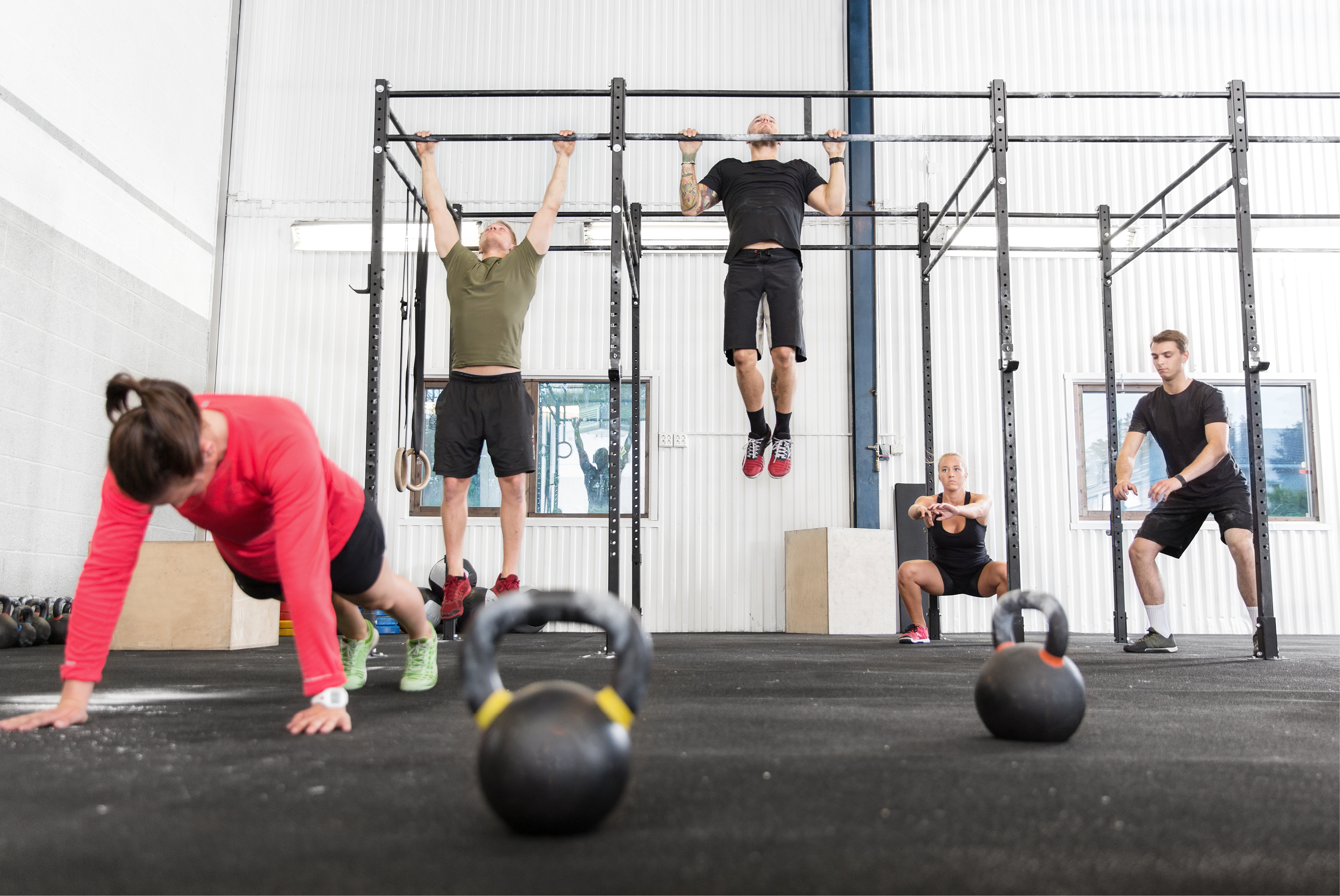
Over the past ten years, the world has had a love/hate relationship with CrossFit. While some people swear by it and can only go a few minutes without talking about the sport, others ridicule the cult-like fitness trend and insist that it causes far too many injuries. By definition, CrossFit is a high-intensity fitness program incorporating elements from several sports and types of exercise. As both a CrossFit coach and physical therapist, I’m here to tell you what goes on behind the scenes.
One thing I really like about CrossFit is that it encompasses many facets of wellness, strength, cardiovascular conditioning, and building great relationships within a tight-knit community, with a lower risk of injury than what you might expect.
- Strength. Many times, strength is a staple in the workouts. Being able to squat, overhead press, and clean and jerk are very functional movements in everyday life. You need strength to be able to rise from a chair, lift objects into the cabinet at home, or even to make a trip from the car to the house with multiple bags of groceries. In 2012, Brazilian researchers found a link between a person’s inability to rise from a seated position on the floor and the risk of being 6.5x more likely to die in the next six years. So, if you don’t think strength is an important aspect of fitness, let that research study sink in.
- Cardiovascular Health. One important component of CrossFit is cardiovascular (metabolic) conditioning, or in CrossFit terminology, “metcons.” It has been well documented that people who are physically active have a decreased association with cardiovascular mortality and cardiovascular disease, in addition to having lower blood pressure, better insulin sensitivity, and an improved lipoprotein profile. In CrossFit, metcons test your heart’s ability to pump blood to various muscles throughout your body to accomplish the workout.
- Injury Rates. When asked why they haven’t tried CrossFit, people often say, “I like my health and I wouldn’t want to injure myself.” However, according to a 2018 study, CrossFit has an injury rate of 3.1 injuries per 1000 hours trained, which is comparable to gymnastics (3.1 injuries/1000 hours). Furthermore, common sports such as American high school football (140 injuries per 1000 hours trained), ice hockey (78.4 per 1000 hours trained), men’s and women’s soccer (4.22 and 5.21 hours per 1000 hours trained) and Zumba (3.9 to 5.7 injuries per 100 hours trained) report higher injury rates than CrossFit.
- Healthy Relationships. A 2010 research study showed that developing close friendships was a high predictor of a long life expectancy. The theory is that this is because you can count on someone in times of stress as well as other benefits. Many people refer to CrossFit as having a cult following, but I’d say it’s more like a family. Sometimes I intend to work out at the gym for an hour, and before you know it, I look at my watch and realize that it’s been three hours. Why? Because the bonds you develop with the people you work out with are incomparable and they extend far beyond the walls of the gym.
The next time you walk by a CrossFit gym, stop in and say hello! At first glance, Olympic lifting and gymnastics may seem intimidating, but take it from me—I’ve been a CrossFit coach for more than three years and we rarely have people new to CrossFit progress right to advanced lifts without having the required skill pre-requisites. I recommend finding a gym with experienced coaches that will guide you to more advanced exercises once you have the required strength, mobility, and skills. If you stick with it, I can almost guarantee you’ll find a healthier, happier lifestyle.
References:
- Brito, L. B., Ricardo, D. R., Denise Sardinha Mendes Soares De Araújo, Ramos, P. S., Myers, J., & Araújo, C. G. (2012). Ability to sit and rise from the floor as a predictor of all-cause mortality. European Journal of Preventive Cardiology, 21(7), 892-898. doi:10.1177/2047487312471759
- Domene, P. A., Delextrat, A. A., & Easton, C. (2016). Injury Surveillance of Female Adult Zumba® Dancers. Medicine & Science in Sports & Exercise, 48, 866. doi:10.1249/01.mss.0000487595.97663.d7
- Holt-Lunstad, J., Smith, T., & Layton, J. (2010). Social Relationships and Mortality Risk: A Meta-analytic Review. SciVee. doi:10.4016/19865.01
- Klimek, C., Ashbeck, C., Brook, A. J., & Durall, C. (2018). Are Injuries More Common With CrossFit Training Than Other Forms of Exercise? Journal of Sport Rehabilitation, 27(3), 295-299. doi:10.1123/jsr.2016-0040
- Nystoriak, M. A., & Bhatnagar, A. (2018). Cardiovascular Effects and Benefits of Exercise. Frontiers in Cardiovascular Medicine, 5. doi:10.3389/fcvm.2018.00135
The medical information contained herein is provided as an information resource only, and does not substitute professional medical advice or consultation with healthcare professionals. This information is not intended to be patient education, does not create any patient-provider relationship, and should not be used as a substitute for professional diagnosis, treatment or medical advice. Please consult with your healthcare provider before making any healthcare decisions or for guidance about a specific medical condition. If you think you have a medical emergency, call your doctor or 911 immediately. IvyRehab Network, Inc. disclaims any and all responsibility, and shall have no liability, for any damages, loss, injury or liability whatsoever suffered as a result of your reliance on the information contained herein.
